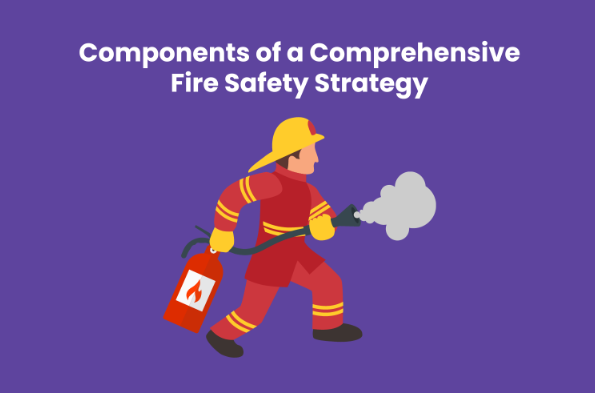To properly understand What is Fire Safety, one must realise that it includes much more than fire preventi0on. Education, preparedness, and reaction tactics are all part of a holistic approach to fire safety that aims to reduce hazards in various contexts. One of the most important ways that people and businesses can learn about fire safety in our modern digital era is through Online Fire Safety Training. This blog examines in detail what makes up an all-inclusive fire safety plan.
Table of Contents
- Risk Assessment
- Fire Safety Education and Training
- Installation and Maintenance of Fire Detection Systems
- Fire Suppression Systems
- Emergency and Evacuation Planning
- Access and Facilities for Fire Services
- Compliance with Fire Safety Legislation
- Regular Audits and Reviews
- Creating a Fire Safety Culture
- Integration of Technology
- Conclusion
- Risk Assessment
A comprehensive risk assessment is the bedrock of any fire safety plan. Finding combustible materials, electrical equipment, and other possible fire dangers is the first step in this procedure. The building’s occupancy, the type of operations carried out, and the possible effects of a fire on those present are all factors considered in a comprehensive evaluation.
- Fire Safety Education and Training
If we want to make sure that everyone is prepared to put out fires and deal with emergencies, we must invest in education and training. Because of the convenience and accessibility it provides, fire safety training offered online has grown in popularity. Among the many subjects covered in this course are methods for preventing fires, using fire extinguishers and evacuating a building safely.
- Installation and Maintenance of Fire Detection Systems
Smoke and heat detectors, among other fire detection equipment, are integral to any thorough fire safety plan. Thanks to these devices ‘ early warning indicators, people can get out of their buildings in plenty of time. These systems must undergo regular maintenance and testing to guarantee their operation when required.
- Fire Suppression Systems
Fire suppression systems, including sprinklers, aim to contain and put out flames before they spread. In the event of a fire, these technologies can lessen the damage and perhaps save lives. The hazards and characteristics of the building should inform the selection of the appropriate suppression system.
- Emergency and Evacuation Planning
If you want to know how to handle fire situations well, you need to have a strategy. Specified responsibilities of fire marshals or wardens, meeting places, and evacuation routes should all be detailed in this plan. Make sure everyone knows how to evacuate by practising with exercises regularly.
- Access and Facilities for Fire Services
Ensuring the building and its essential utilities are easily accessible to fire services is paramount. Among these measures are the maintenance and availability of fire hydrants and other firefighting equipment and the clearance of roadways for fire engines.
- Compliance with Fire Safety Legislation
Not only is it the law, but a fire safety strategy must also adhere to all applicable state and federal fire safety laws. Building codes, fire safety requirements, and restrictions particular to a certain industry are all part of this.
- Regular Audits and Reviews
Fire safety strategies need to be reviewed and audited regularly to keep them current and effective. This method can better identify any changes in hazards or deficiencies in the present measures. The results of these audits may be utilised to continuously enhance and revise the fire safety strategy.
- Creating a Fire Safety Culture
Communities and organisations must foster a culture of fire safety. This includes creating a space where people feel comfortable voicing concerns about safety and taking an active role in preventing fires.
- Integration of Technology
Smart smoke detectors and remotely monitorable fire alarm systems are two examples of the new fire protection technologies made possible by technological advancements. Fire safety measures can be made more successful by integrating this technology.
Conclusion
Ensuring people are safe and property is protected requires a thorough fire safety plan. Risk assessment, training and education, appropriate systems and equipment, preparation and planning, legal compliance, and technological integration are all parts of the multi-pronged strategy. We can make everyone’s settings safer by learning about and using these components to lessen the likelihood of fires.


